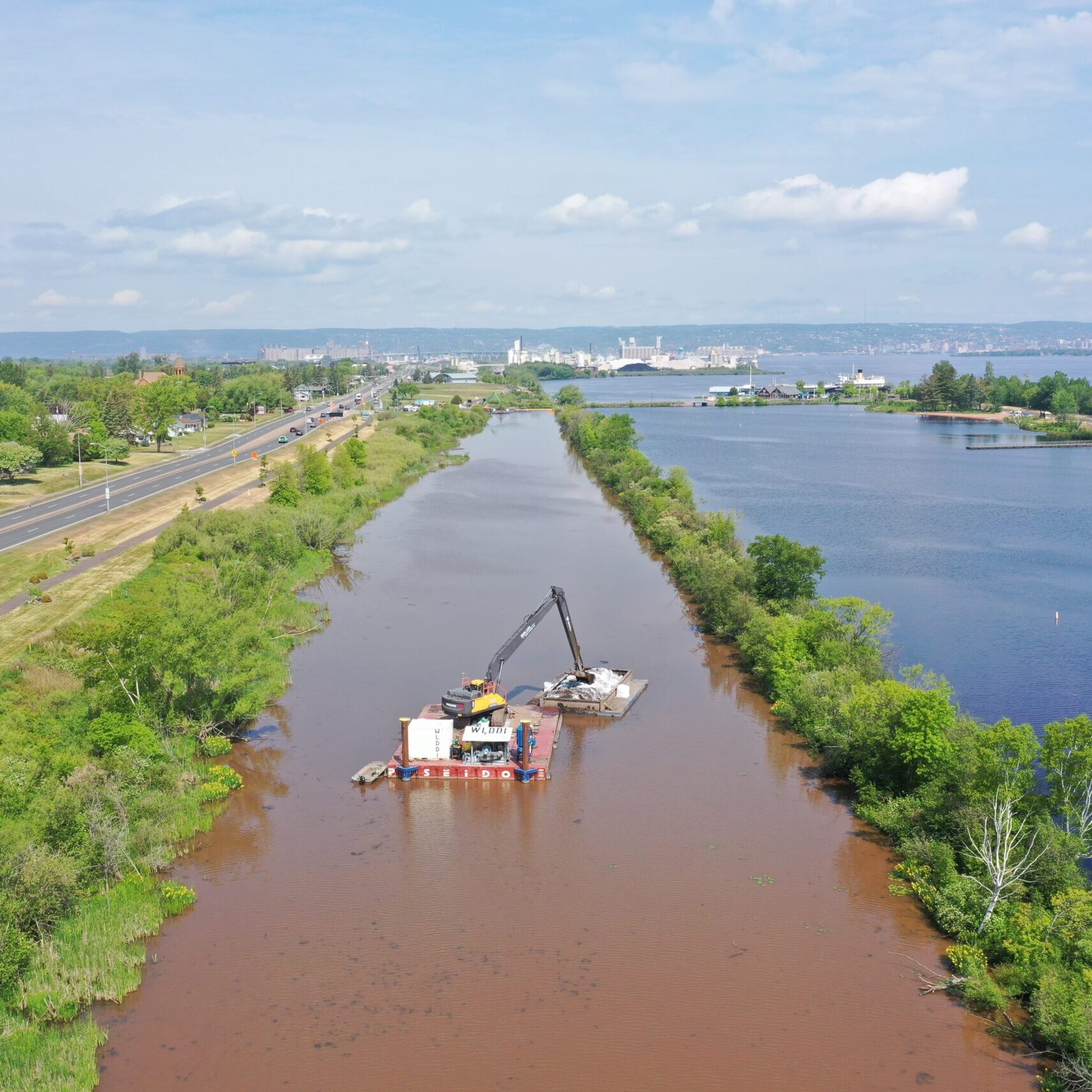Project
Pickle Pond Remedial and Habitat Construction

Project Summary
LOCATION: Superior, Wisconsin
CLIENT(S): WDNR
SCOPE(S) PERFORMED: Dredging, Sediment Management, Environmental Management, Habitat Restoration, Hydrographic Surveying
Pickle Pond is a nine-acre urban pond created by the construction of a railroad embankment through Barker’s Bay. The pond is a unique area in the lower estuary: it is sheltered from the main bay and provides habitat to many waterfowl, beavers, otters, and other wildlife. White Lake Dock & Dredge was responsible for dredging more than 16,500 cubic yards of contaminated sediments, consisting of fine-grained silty clays from this shallow draft area of the St Louis River Estuary. Contaminated sediments were mechanically dredged using a customized Volvo EC480 EL Long Reach excavator (equipped with RTK-GPS dredge guidance software and White Lake Dock & Dredge’s environmental dredge bucket). Materials were removed within a 6” over-dredge tolerance with White Lake averaging <4” of over-dredge over the work area (including multipole complex side slopes, varying cut grades, and embankment openings) to minimize project costs. All contaminated sediments were solidified with our in-barge polymer solidification process. Water quality was measured adjacent to the work area with a 50 NTU limit. White Lake Dock & Dredge was able to adhere to this limit through use of turbidity curtain controls and temporary weirs between the embankment openings.
This solidification process applies a non-toxic Super Absorbent Polymer directly in the material barges such that materials immediately pass paint filter testing. These materials were then loaded directly into trucks for offsite disposal without any need for additional re-handling or drying time. This process significantly reduced project costs and saved WDNR more than $2M compared to other approaches. This solidification process allowed us to eliminate the need for significant upland improvements on the very tight worksite as well as significantly reduce overall disposal weights by eliminating the need for addition of heavy dewatering additives (such as Portland Cement). Materials disposed of ultimately weighed < 1.3 tons/cy compared to the 1.7 tons/cy assumed in the original design – saving the project significant costs.
Following completion of the contaminated sediment work, another 21,000 cubic yards were dredged and used as cap material within the work area to form a wetland base. Cap materials were placed to a fixed elevation within a 1” placement tolerance. In total, more than 11 acres of new wetland was re-planted with various emerging wetlands and plug plantings. Additional work included water treatment, railroad demolition, armored spillway channel construction, dust / odor control, and habitat enhancements. Benefits of this project include enhanced habitat for fish, birds, and turtles, heightened control of invasive species, increased recreational opportunities for nonmotorized watersports, reduced runoff pollution, and increased water flow between Pickle Pond and adjacent Barker’s Bay.
If you’re in need of our services, reach out to our staff. We’d be happy to connect you with one of our senior staff to discuss your project in detail.
